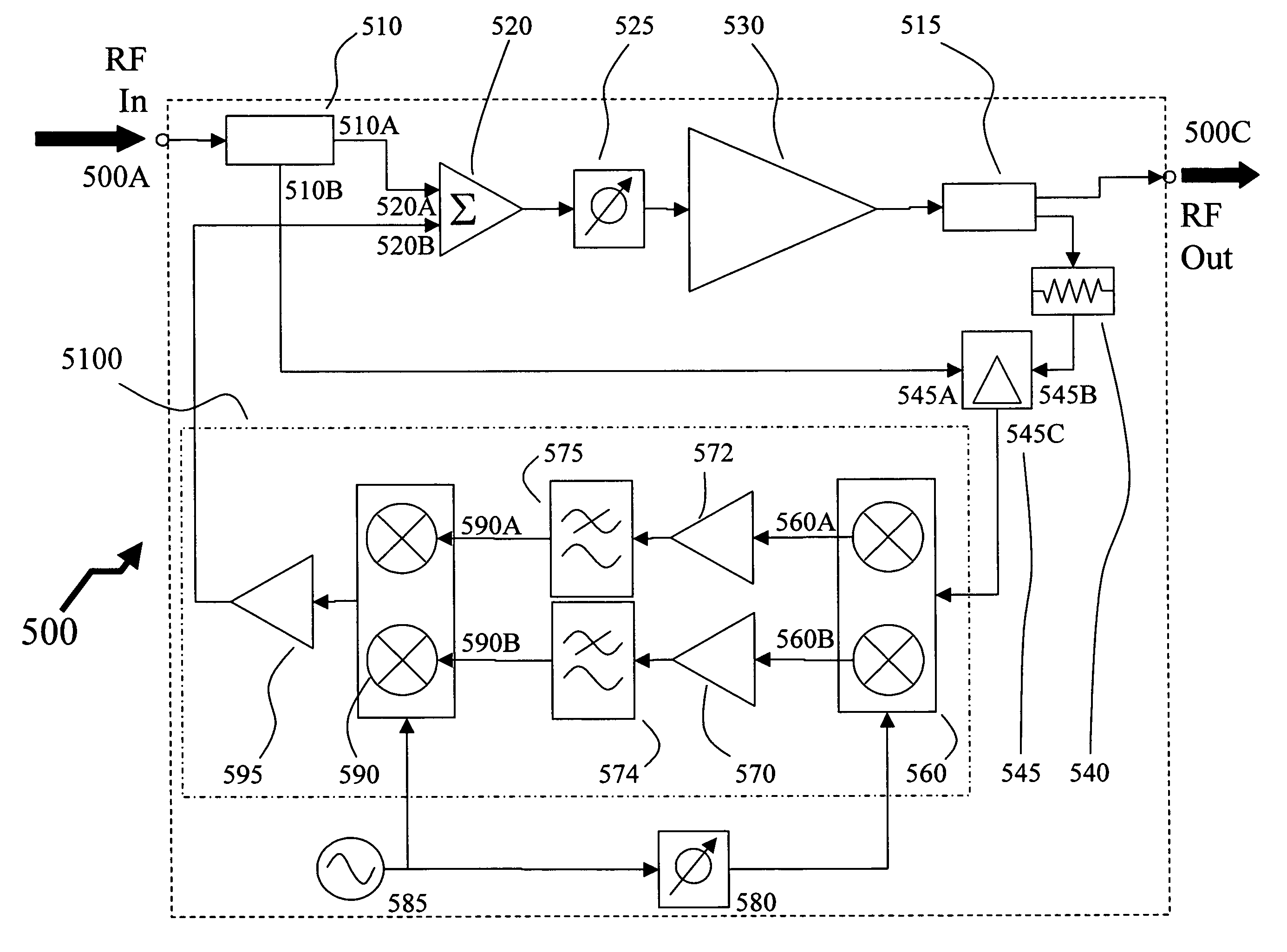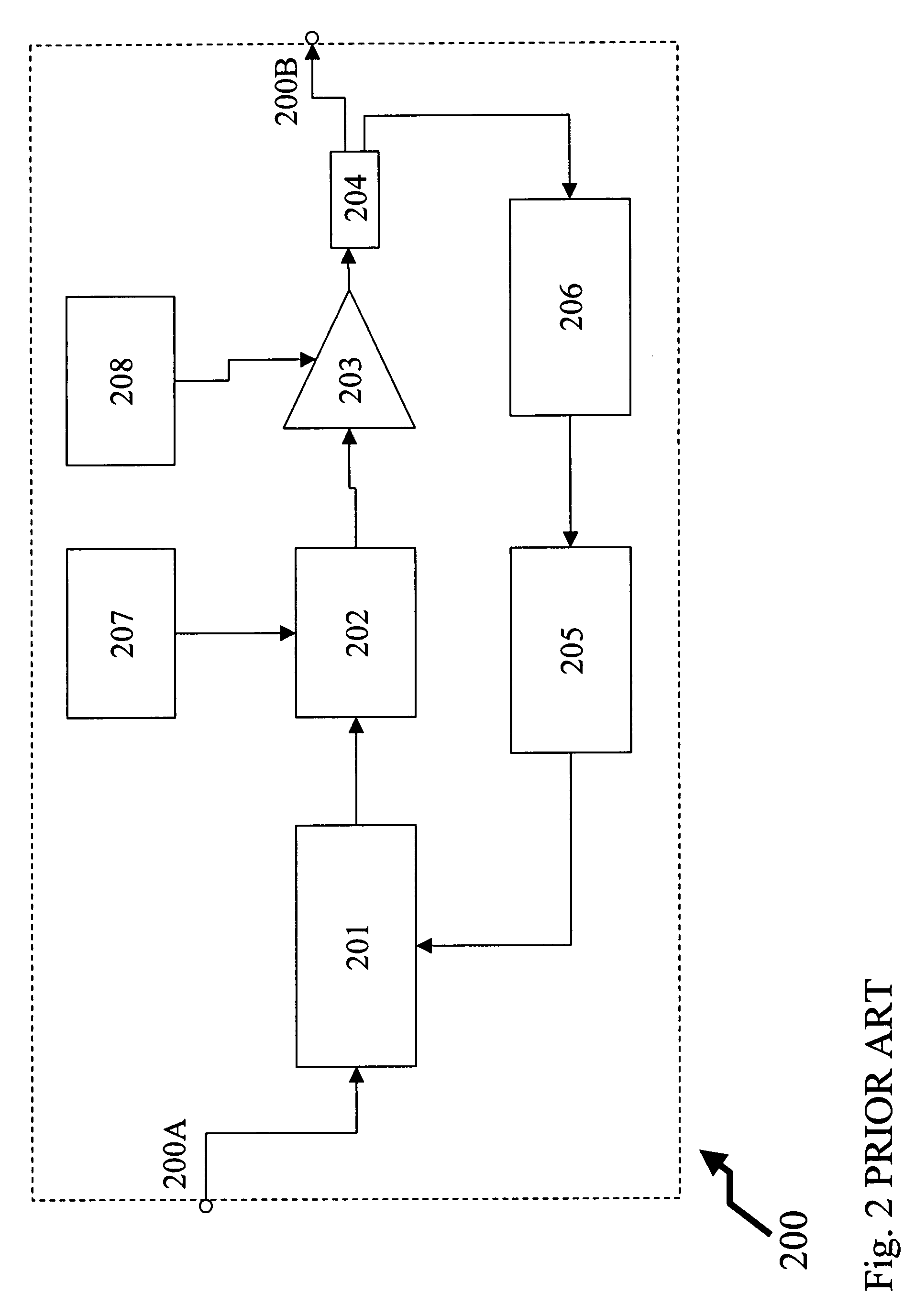Method and apparatus for distortion correction of RF amplifiers
a distortion correction and amplifier technology, applied in the field of microwave amplifiers, can solve the problems of inefficient correction technique, add significant loss, and predistortion cannot easily cope with simple memoryless deterministic distortion, and achieve the effects of reducing time delay, reducing distortion components, and reducing distortion components
- Summary
- Abstract
- Description
- Claims
- Application Information
AI Technical Summary
Benefits of technology
Problems solved by technology
Method used
Image
Examples
Embodiment Construction
[0041]Shown in FIG. 1 is an exemplary feed-forward amplifier system 100 according to Chen et al (U.S. Pat. No. 5,963,091). As shown, the feed-forward distortion correction system 100 comprises an RF input port 100A which receives an RF modulated signal Vm which is to be amplified, and provided as an amplified linear replica at the output port 100B as amplified signal Vo.
[0042]The RF input port 100A is electrically coupled to the input splitter 105 which taps a predetermined portion of the RF modulated signal Vm to feed forward into the correction signal path 1100, and couples the remaining RF modulated signal Vm into the main arm 1200. The main arm 1200 couples the RF modulated signal Vm from the input splitter 105 to the power amplifier 101 which amplifies the RF modulated signal Vm as required by the overall system. The feed-forward amplifier system 100 provides amplification, that is required, for example in the transmit path of a wireless WiMAX transceiver embedded into a portab...
PUM
 Login to View More
Login to View More Abstract
Description
Claims
Application Information
 Login to View More
Login to View More - R&D
- Intellectual Property
- Life Sciences
- Materials
- Tech Scout
- Unparalleled Data Quality
- Higher Quality Content
- 60% Fewer Hallucinations
Browse by: Latest US Patents, China's latest patents, Technical Efficacy Thesaurus, Application Domain, Technology Topic, Popular Technical Reports.
© 2025 PatSnap. All rights reserved.Legal|Privacy policy|Modern Slavery Act Transparency Statement|Sitemap|About US| Contact US: help@patsnap.com



